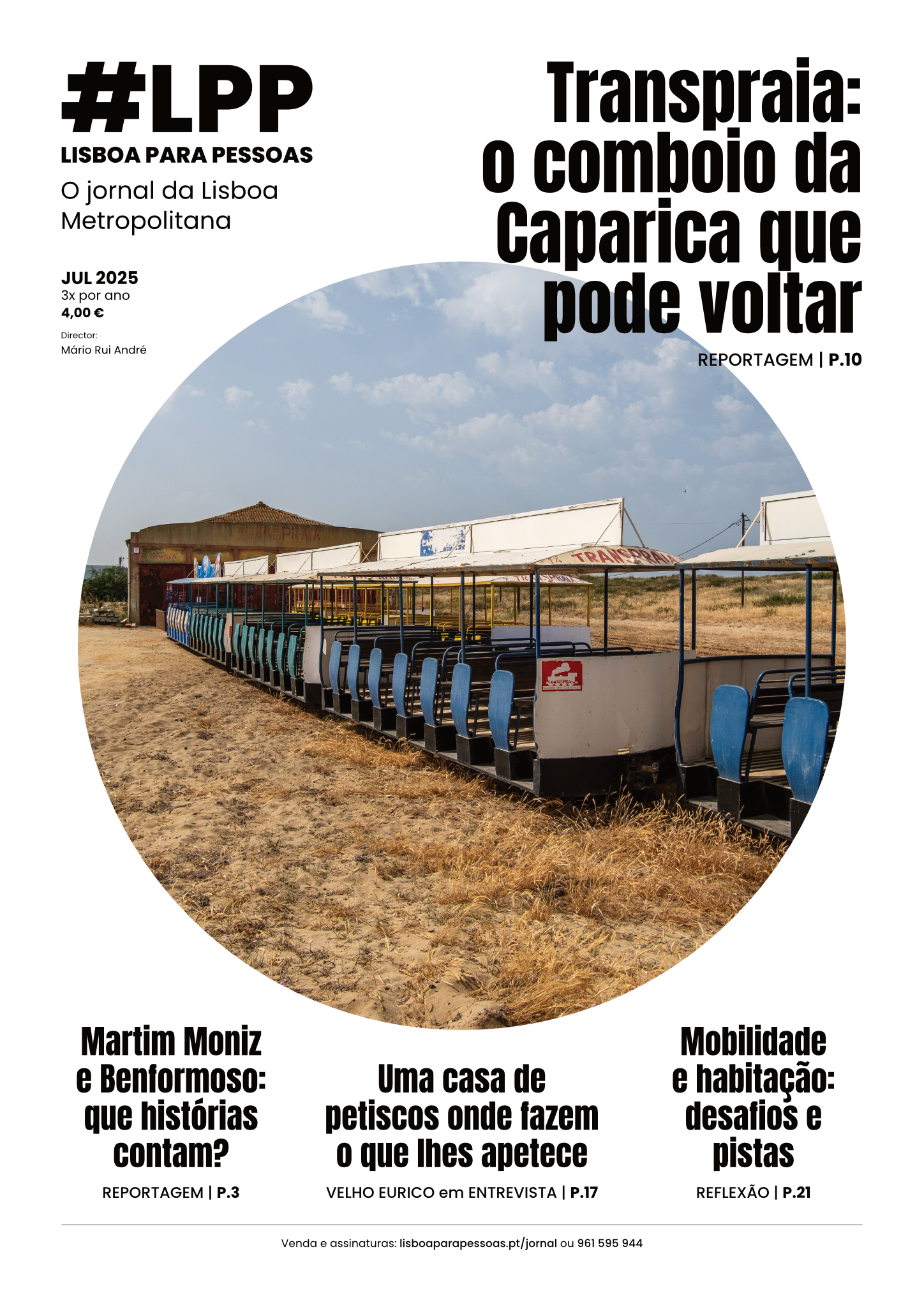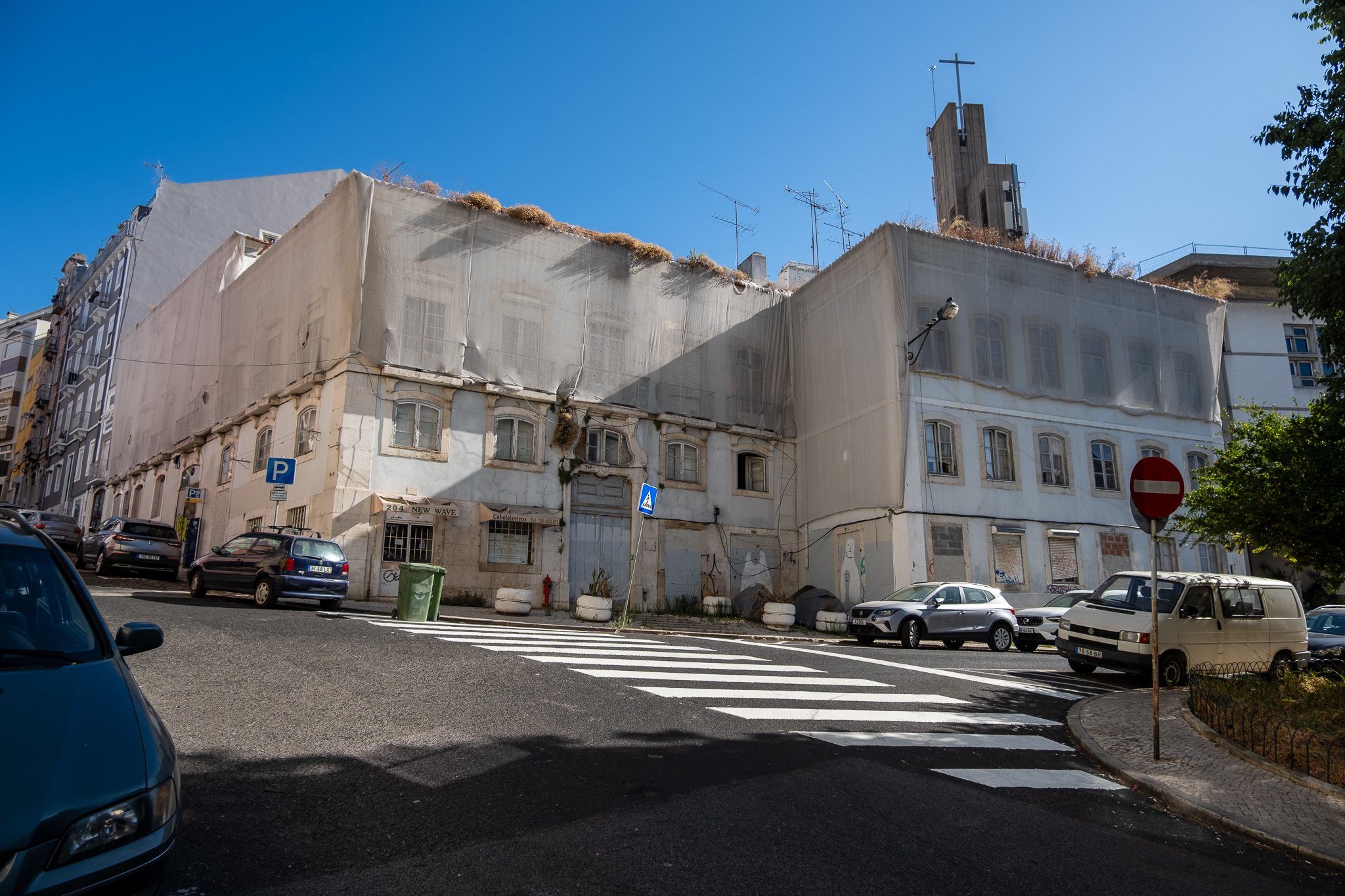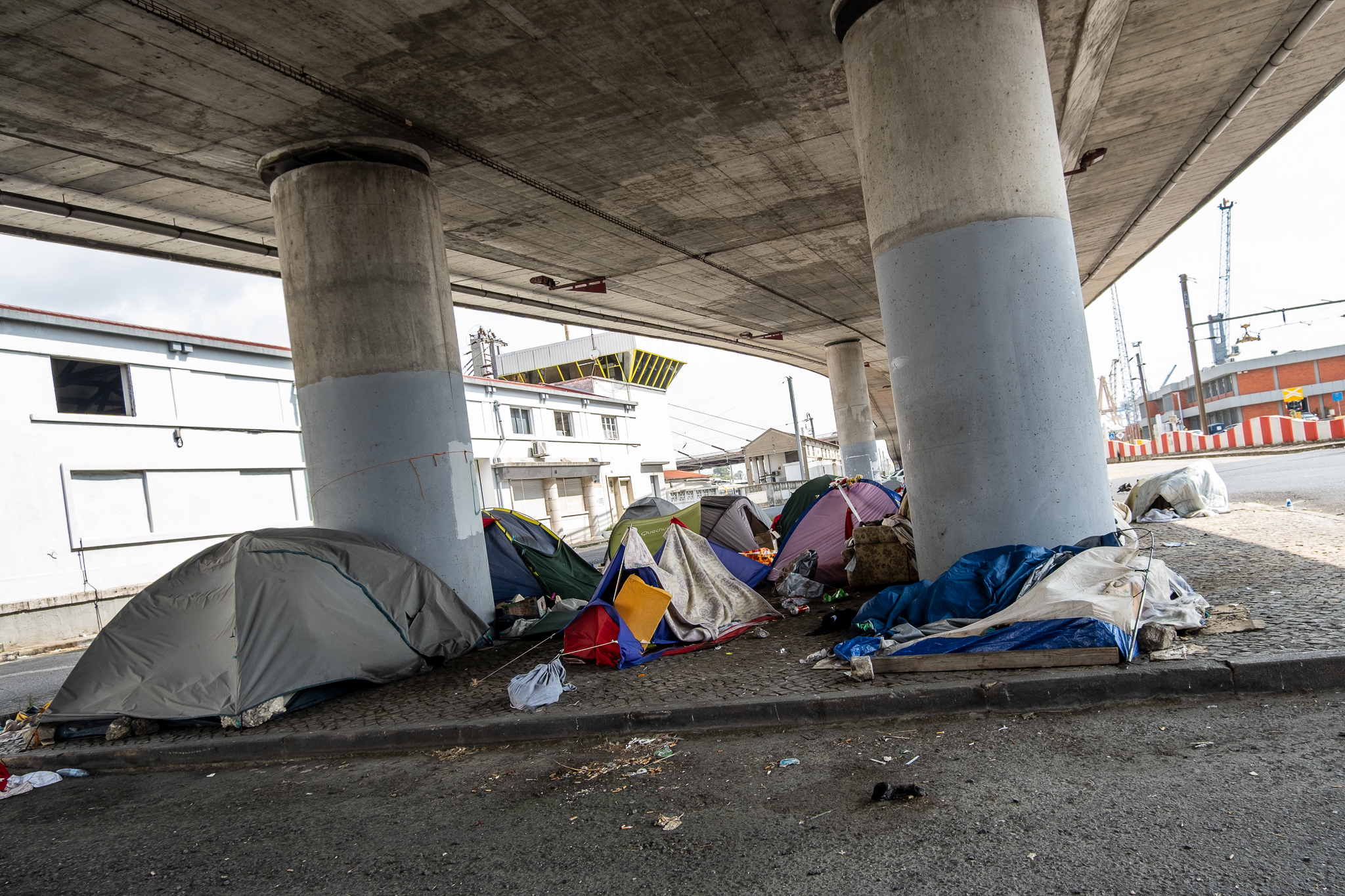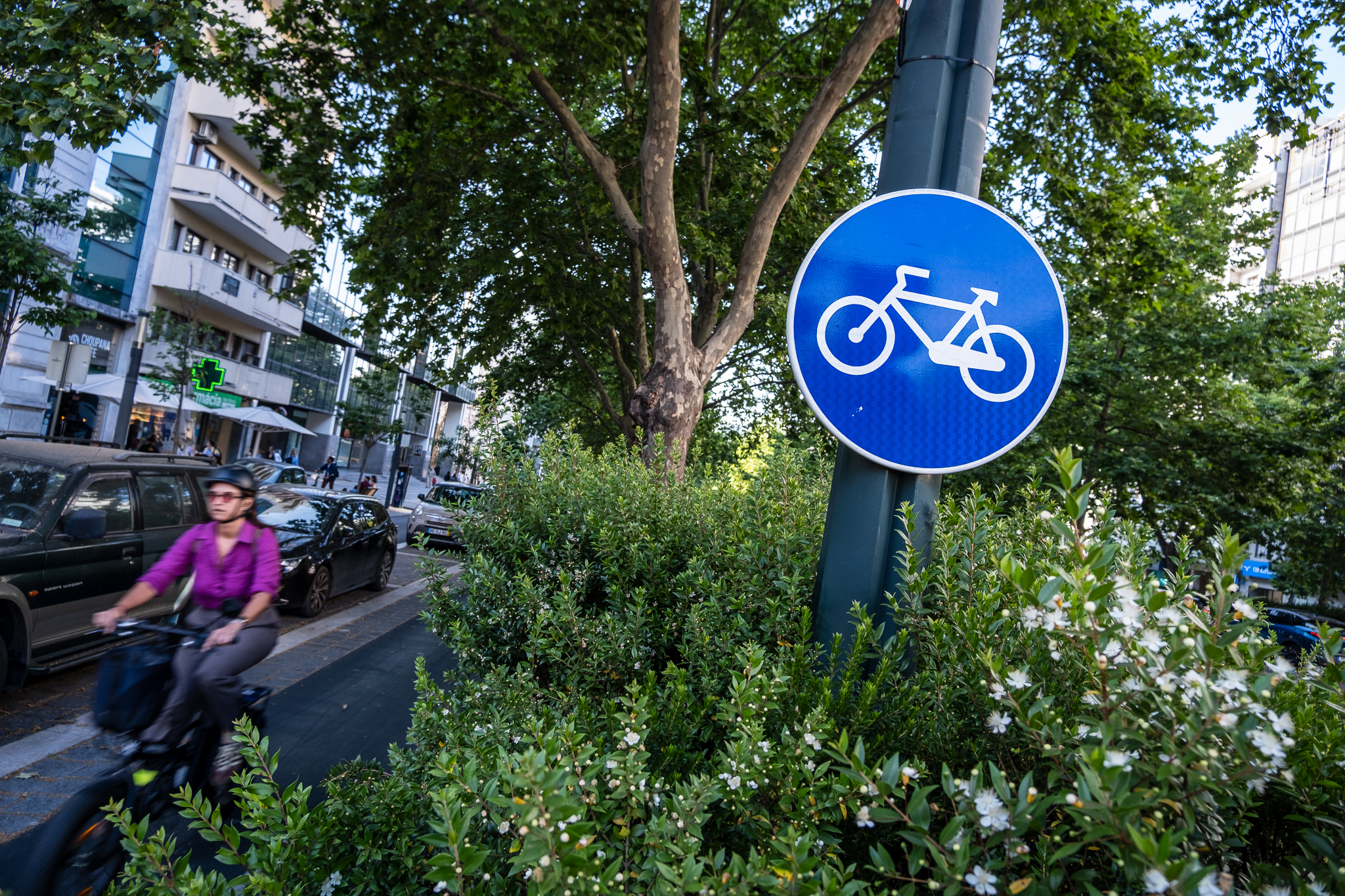The PCP put the issue of the Circular Line on the agenda with the approval, by a majority in Lisbon City Hall, of a negative assessment of the project. Moedas recovered the idea of a "loop line". João Ferreira asks for priority to the extension of the Red Line. But the Government says there is no way back.

Carlos Moedas defended, in his candidacy, a "looped line". For João Ferreira, from the PCP, there are more proposals besides this one, but what the communist councilman is sure of is that the Lisbon Metro's Circular Line is not a good option and intends to put the issue back on the agenda and put pressure on the Government in whatever way possible to annul the project.
What does the PCP ask for?
In this sense, the PCP presented a motion addressed to the Government requesting the "suspension of the whole process concerning the construction of the Circular Line" and that the concession for the work on the Campo Grande viaducts, to connect the current Green and Yellow Lines, is not signed (lot 3). At this moment, the works for the first two parts of the future circular line have been awarded - the connection from Rato to Santos with the new Estrela station (lot 1) and the section between Santos station and Cais do Sodré (lot 2).
Only the construction of the Estrela station, which will be the subway station city and Europe's deepestis currently moving forward in the field (with several constraints in terms of pedestrian mobility in the area, as reported by Lisboa Para Pessoas in July).
In the motion, the PCP also asks the government "an urgent articulation with the Lisbon City Hall, to identify the priorities that must be established for the Metro network, reassessing the impact of the immediate suspension of the works on the Circular Line, redoing projects and making the financial impact studies". For the communist councilmen of the Lisbon City Council, João Ferreira and Ana Jara, the priorities must pass:
- by bringing the Metro to Alcântara and the western zone;
- by connecting it to Loures via the Yellow Line;
- and for extend the current Green Line from Telheiras to Benfica.

In a private meeting of the Lisbon City Council, this Wednesday, November 17th, the PCP's motion was approved, in general, with votes in favor from PSD, CDS, PCP, and BE, and votes against from PS and Livre. This was not the first motion against the Circular Line voted by communists at a town hall meeting - the same parties (PCP, PSD, CDS, PCP and BE) had already joined in April 2020 to approve a similar document, isolating the PS in supporting the current Lisbon Metro expansion project.
But this motion submitted and passed in 2020 came in a different context. The Assembly of the Republic had, for its part, approved in February an amendment to the State Budget (OE) for that year, through a proposal by the PAN and another by the PCP, to suspend the project to build the Circular Line, with the PS alone voting against. But when the President of the Republic, Marcelo Rebelo de Sousa, promulgated the State Budget at the end of March, understood that the Parliament had only made a "policy recommendation" and not ordered a suspensionand an order from the Minister of the Environment ordered that the work would proceed as planned, because these are investments "urgent and critical".

To ExpressoJoão Ferreira acknowledged that the recent motion represents an act "somehow symbolic" and an opportunity after the elections to recover a theme that had been discussed before and brought PCP and PSD together. For the communist councilman, the Circular Line results from "a stubborn position of the Government, against everything and everyone", which "counted on this attitude with the Lisbon City Council". João Ferreira says there are "there are a number of possibilities" and more urgent improvements that are not necessarily the loop line proposed by Moedas (see below) and are identified in the motion.
The government was right to heed the deliberation of the @CamaraLisbon. It can save time and money. Channel public resources into projects that improve, rather than degrade, mobility conditions. For now, you react with obstinacy and arrogance. It is wrong. https://t.co/NqPdA3QX0R
- João Ferreira (@joao_ferreira33) November 17, 2021
What are the Government's plans for the Metro?
In the motion presented by the PCP and endorsed by the majority of the parties of the Lisbon Chamber, it is requested that, instead of the Circular Line, the Metro be extended to Alcântara and the western part of the city (Ajuda and Belém), to Loures by extending the Yellow Line and to Benfica by extending the Green Line from Telheiras.

However, the PCP's demands are not forgotten in the current expansion plans for the Lisbon MetroBut instead of being a priority, they will be a priority only after the conclusion of the Circular Line. While the latter is advancing with a total investment of 240.2 million euros - the majority coming from European funds - the Government, as guardian of the Lisbon Metro, has already secured European funding for the expansion of the Red Line and for the surface metro in Loures and Odivelas - these two investments are foreseen in the Recovery and Resilience Plan 2021-2026 (PRR) and the contracts to guarantee the money with the European Union were signed at the end of September this year.
So, according to the expansion plans of the Lisbon Metro:
- Lisbon Metro will reach Alcântara through the extension of the Red Linewith stations in Amoreiras, Campo de Ourique, Infante Santo and, finally, Alcântara. This project results in an addition of 4 km to the network, an investment of 304 million euros and must be completed by the end of 2025;
- the connection of the Lisbon Metro to Loures will be made via a surface solution from the current Odivelas metro station. This light rail foresees a 12.4 km line with a total of 18 stops, both in Loures and Odivelas, through a "C" configuration. It must be ready by the end of 2025;
- a connection to the western zone is being thought through LIOS. This light rail or tramway will result from a collaboration between Carris, the Lisbon Metro and the municipalities of Oeiras, Lisbon and Loures, since it will cross all three. There will be two lines and 24.4 km. It is through the LIOS that the "metro" will reach Belém or Ajuda, or also Sacavém.
- the conclusion of the The Circular Line (or new Green Line) is planned for late 2023 and early 2024representing an addition of 2 km to the Metro network. There will be stations in Estrela, in front of the Basilica, and another in Santos, in Largo da Esperança, very close to the ISEG.
You can read more about these projects here.
Why is the Circular Line being built?
Both in the Portuguese Parliament and in the Lisbon City Council, the PS has been alone in defending the "Circular Line" as a priority in the Lisbon Metro expansion. The motions, political recommendations and civic protests are piling up, but the PS, the party that supports the current central government and supported the city council's executive, stands firm.

The big argument has to do with the confluence of passengers in Cais do Sodré. Here 20.5 thousand passengers arrive daily from the Cascais Line and 15 thousand from the river transportThe Cais do Sodré subway station and the current Green Line are the only way to get on the network and reach work areas such as Entrecampos - Avenida da República - Picoas - Marquês de Pombal.
With the Circular Line, Cais do Sodré station would distribute passengers in two directions, reducing transfers and pressure on the current Green Line. In addition, this ring would also pass by the Campo Grande bus interface, to which 25 thousand passengers arrive daily from the suburban bus lines; and by the Entrecampos railway station, which receives 28.5 thousand passengers daily from CP and Fertagus.
On the other hand, in February 2020, the Metro de Lisboa released a press release about the studies carried out and the alternatives studiedIt was concluded that with a Circular Line instead of two independent lines the benefits in terms of new passengers, fewer cars and movement in the stations were greater (the extension of the Red Line between São Sebastião and Campo de Ourique - that is, without the extension to Alcântara - with three stations or two stations - was also studied).

What is the Government's response to the Lisbon Chamber's motion?
João Pedro Matos Fernandes, Minister of the Environment and Climate Action, responsible for the Lisbon Metro, reacted quickly to the Lisbon City Council's motion against the Circular Line project through the media.

To Rádio ObservadorMatos Fernandes said that the Government will not back down because the Circular Line is "the one that best serves mobility in the city of Lisbon and in the Lisbon Metropolitan Area; because we have been going from study to study for a long time to prove it; because we have a work in progress, another work a week away from being consigned and the other one to be consigned, certainly to be consigned by the end of the year; and because the project was financed by community funds"..
To the Minister,"this work is decided, it is financed, I will never be responsible for doing the nonsense that would be to stop this work" and recalled that there was a green light from the Lisbon City Hall when the Circular Line was thought and projected. "Doing works against the will of the municipality is never a good principle, but that can't apply to works that come from behind."
Matos Fernandes also said that "the Government and the Lisbon Metro want very much to articulate with the Lisbon Chamber" for example, "have permits from the Lisbon City Council to make four elevators in four different stations to connect to the surface and serve people with less mobility" or "extend the Red Line to Alcântara, as indicated in this motionbut we are waiting for the Lisbon City Hall to say that they agree with the project so that we can submit the environmental impact study to the proper entities".
What does Carlos Moedas say?
A line that starts in Odivelas, ends in Odivelas, and joins the current Green and Yellow lines together without creating a circle. This is the proposal that Carlos Moedas presented during the election campaign in your program and which he defended again this week
Transform the Circular Line and the future Yellow Line into a single loop line (Odivelas, Campo Grande, Rato, Cais do Sodré, Alameda, Campo Grande, Telheiras)to maintain direct connections (without transshipment) from Odivelas, north of Lisbon, and Telheiras to the city center.
- Electoral program New Times | Carlos Moedas

Moedas' idea is not original. In 2019, the Movement Against the End of the Yellow Line, which was born out of concern about the shortening of the current Yellow Line, had suggested precisely a loop line starting in Odivelas and ending in Telheiras, covering the entire city. Both this movement and Moedas accept the construction of new stations in Estrela and Santos, connecting Rato to Cais do Sodré, but disagree with the work in Campo Grande to connect the current Green and Red lines. That is, keeping lots 1 and 2 of the Circular Line project but discarding lot 3 of the construction, it would be possible to create this loop line.
In a statement sent to journalists after the town hall meeting on the 17th, Moedas said that the Circular Line is "a mistake" and that "is far from the best option to serve the city"advocating a revision of the project. "We still have time to correct the situation. I am available and I believe that with commitment and rationality from the government and Metro we can reach a much better solution that serves the population."he added. With the loop line, the passenger confluence problem in Cais do Sodré could still be solved, since people could still travel in both directions and
In his electoral program, Carlos Moedas supported the intention of taking the Red Line to Alcântara, already thinking about its extension to Miraflores and Algés, which is foreseen in the Government's projects both through the Lisbon Metro and LIOS:
Extension of the Metro's Red Line to Alcântara, with subsequent extension through the mid-coast to Miraflores and Algéswhere the interface with the Cascais Line will be made. Connection of the Cascais Line to the Cintura Line and the new Alcântara metro station;
- Electoral program New Times | Carlos Moedas
What plans existed in the past?
The first Metro Line network was designed in the famous "Y": two distinct lines, one starting at Sete Rios and the other at Entrecampos, converged at the Marquês de Pombal (or Rotunda, as it was known at the time), a station from which a common trunk line to Restauradores began. The opening to the public took place in 1959 - the Lisbon Metro was born with 6,6 km, 11 stations and a single line that divided or joined in the Rotunda.
The years went by, new stations were created and we arrived at 1993, when the network contained a circular ringeven though there is no ring line. In that year, it was already known that the ring was to be broken: in 1995, the "Y of the Rotunda" (Marquês de Pombal), projected five years earlier in the first Network Expansion Plan (PER I), was disconnected; and in 1998, the connection between Restauradores and Rossio was broken. The Blue, Yellow and Green lines now exist.
The PER II had been published in 1993, knowing the future need to take the Metro to the eastern area where the Expo'98 would take place (Red Line). It established the four lines that we know today and the idea for the future of the Yellow Line: with the end of the "Y" and the definition of this line, at the time, between Campo Grande and Marquês de Pombal, it was planned to extend it south to the Rato. The plan was later to take the Yellow Line to Alcântara, with stops at Estrela and Infanto Santo, which would allow a direct connection to the Cascais Line - solving the pressure that today passengers from Cascais put on Cais do Sodré, which could reach the city center from Alcântara.
In 2009, the PS government proposed dozens of new stations and an ambitious expansion plan with a time horizon of 2010/2020 - Lisbon Metro Expansion Plan 2010/2020. The Lisbon Metro would go to Loures, have a new extension to Amadora and new stations and connections within the city. The desire to bring the Yellow Line to Alcântara appeared in this plan, together with the closing of the Green Line in a circular ring as is now being realized - new stations between Rato and Cais do Sodré were planned in São Bento and Santos. The Estrela station would be on the Yellow Line, which would also stop at Infanto Santo before terminating at Alcântara. The Red Line would be extended from São Sebastião to Campolide, Amoreiras, Campo de Ourique, Prazeres and Alvito.

Also in 2009, a study was developed to define "a hierarchy of priorities for the execution of the planned extensions" in the Plan presented. In the conclusions of this study, carried out by the company TRENMO and not published, the following order of investments to be made in the city of Lisbon was indicated: first connect Rato to Cais do Sodré (with Estrela, São Bento and Santos)then extend the Red Line from São Sebastião to Campolide, Amoreiras, Campo de Ourique and Prazeres, and finally extend the line from Telheiras to Pontinha, with the Fernando Namora and S. Francisco de Assis stations.
The years go by, there is an economic crisis in between that put the projects on hold and, in 2017, there is talk again about the expansion of the Lisbon Metro, with the plan made in 2009 as the basis for work. The Circular Line is again presented as a priority and 2021 is the date set for the completion of this project. Also presented is the extension of the Red Line to Alcântara, the Yellow Line from Telheiras to the Pontinha operations center, now with stops at Praça São Francisco de Assis, Quinta dos Inglesinos, and Largo da Luz, then connecting to Colégio Militar/Luz - from here it would follow (as the Yellow or Blue Line) to Benfica, stopping first at Avenida do Uruguai.
However, the construction work on the Circular Line only started this year, at the new Estrela station. The construction work in Santos has yet to begin, as has that in Campo Grande. Meanwhile, part of the investments described in the 2009 plan were transformed into light rail solutions - such as the connection to Sacavém, which was transferred to LIOS, or the expansion to Loures, which will also be done on the surface. To bring the subway to Loures and to extend the Red Line, the Government and the Lisbon Metro have already secured the necessary funding from BrusselsBoth works must be completed by the end of 2025. As for the Circular Line, completion is scheduled for late 2023 and early 2024.
In a presentation held in February at conference Portugal Railway Summit 2021, the extension of the subway from from Telheiras to Benfica appears "confirmed" as an extension of the Yellow Line and is shown at the ambition of bringing the Red Line from the Airport to Alvalade and Entrecampos. On the same map, it also shows the routes of the future power lines metrobus - between Algés and Reboleira and between Paço de Arcos and Cacém, recovering the old SATU route. But all these projects may still take a while to get out of the drawer or end up being altered. In statements to Radio ObservadorFernando Nunes da Silva, former Lisbon councilman for mobility, critic of the current Linha Circular, lamented the "lack of memory" in the country and the fact that "the institutions do not preserve their own strategic orientations that were defined at a given moment and change according to the moods of those who momentarily direct an institution"referring to the expansion plans already defined in the 1990s.








